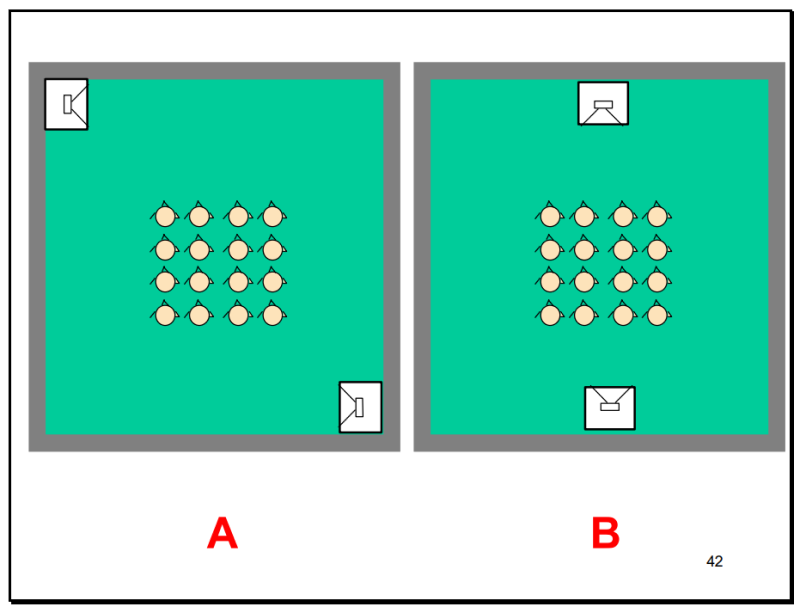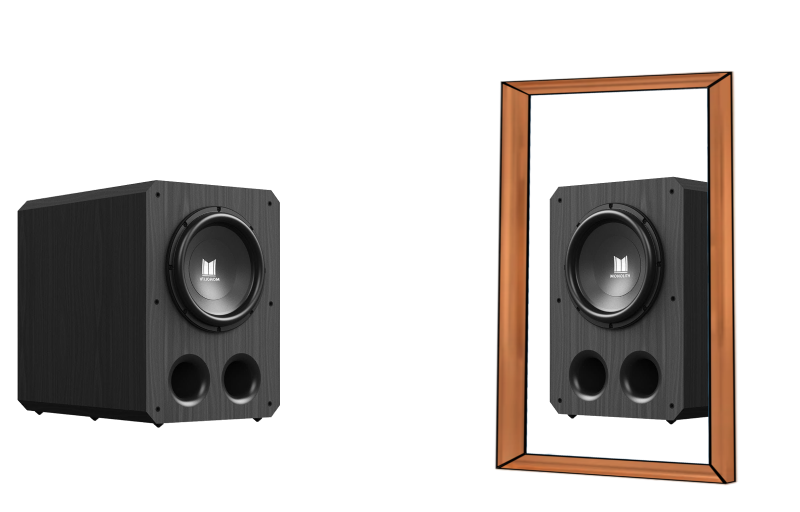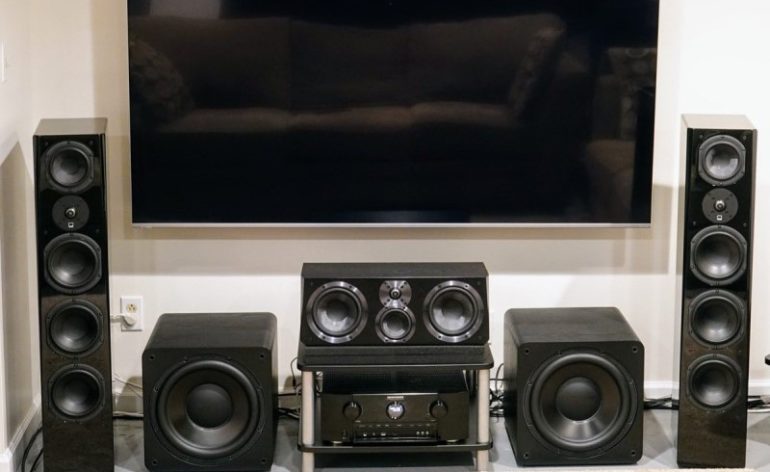Setting Up Dual Subwoofers
Properly setting up dual subwoofers is something that seems to be still shrouded in confusion and misinformation. I’m going to break it down for you in the easiest terms possible with links to articles for more reading if you want the details. I’m going to be honest with you, I’m writing this article so I can link back to it from a bunch of other articles. I constantly find myself writing the same text over and over in subwoofer articles and I’d rather have somewhere to link.
These recommendations are all based on the research by Dr. Floyd Toole et. al. (link). They did mathematical modeling of how subwoofers would work in a room, and then followed those up with real-world measurements. Their work fundamentally changed (and they are still changing) what we know about bass and smaller rooms. This article will be updated as new conclusions are reached. First, some assumptions.
Assumptions
When setting up dual subwoofers, all the research was done with two matched subwoofers that were appropriately sized for the room. This means that each sub, by itself, could fully pressurize the space. When purchasing a subwoofer, you’ll want to make sure it is rated for your room size. Your room size is not dictated by where you put your theater in a room. If you have an open floorplan and you place a TV in the corner, the subwoofers still need to pressurize the entire space. When determining room size, you calculate the cubic volume of the entire volume of the enclosed space. In a bedroom with a door, that is the W x D x H. If the room can be enclosed but has a small hallway, the hallway must be included in the calculation. If the room is open to a kitchen, the kitchen must be included.
Most of the research done on subwoofers assumes an enclosed, rectangular room. When setting up dual subwoofers in any other shape of room, many of the recommendations won’t work. Don’t worry, we have a solution for that as well. But we will start with an enclosed, rectangular room.
Author’s Note: You’ll read that square rooms are worse than rectangular rooms. That is true in some ways, but the research has shown that the suggestions for rectangular rooms work for square rooms as well. It is when you get to L-shaped rooms or other shapes that the recommendations fall apart.
Setting Up Dual Subwoofers in Rectangular Rooms
The easiest way to internalize placing dual subwoofers in a rectangular room is to imagine mirrored locations. Considering the entire space, wherever you put the first subwoofer, the second sub should be mirrored. There is a hierarchy of “goodness” when it comes to subwoofer placement, but as long as you mirror the locations, you should get good results. So, here is a graphic:

In the above image, there are two location options shown for setting up dual subwoofers. One is corner placement, the other is mid-points of opposing walls. If you took a mirror and put it in the center of the room and faced it at any one of those subwoofer, the image it would reflect would indicate the placement of the second subwoofer. So, what is the best locations to set up dual subwoofers? In order:
- Mid-point on opposing walls
- Opposite corners
- Mirrored locations
Sonically, these are the best places to get the most even bass throughout your home theater. If you set up your dual subwoofers in the mid-points of two opposing walls (the image shows front and back walls, but side walls work too), this will give you the best results. Corner placements are second (mathematically but you might not subjectively notice a difference in your room after your run your room correction program). Lastly is mirrored locations
Mirrored Subwoofer Locations
When you can’t use mid-wall or corners, it’s time to get creative. Setting up your dual subwoofers is often dictated by the placement of equipment, doors, and other objects in your room. If you have limited placement options, try to pick two that are mirrored from each other. So, if you have a place on your front wall that is three feet in from the left wall, then place the second subwoofer three feet in from the right wall on the back wall. Those mirrored locations should provide similar results as the other two placements.

But What About All Those Pictures of Subwoofer Flanking Tower Speakers
Yes, manufacturers and many, many people love to show off their home theater pics with dual subwoofers at the front of the room. Usually flanking tower speakers. From a manufacturer’s standpoint, this is easy to explain. It it much easier to take a picture of two subwoofers in a room if they are close to each other. For everyone else…they are usually just mistaken.
For years, the thought was that the bass should come from the same location as the speakers. Even receiver manufacturers have played into this creating receivers with stereo subwoofer outputs. The fact is that both the subwoofers work together along with the room to create the bass in your room. If you see an image of two subs at the front of the room, assume that they set up two more subwoofers at the back of the room in mirrored locations. And they are all getting the same, mono, subwoofer signal.
Non-Rectangular Rooms
What about trying to set up dual subwoofers in non-rectangular rooms? Well, it isn’t easy. The mathematical modeling doesn’t exist and it is very hard to predict how the subs will interact with your room. To get predictable results, it is easiest to keep as many variables constant as possible. That isn’t possible when you add angles and other inconsistencies to the model.
Over at AV Rant, Rob H. has written up a very detailed 12-step guide to setting up dual subwoofers in non-rectangular rooms. While he has given detailed instructions on how to do this by ear only, it will be much easier if you use a measurement microphone and REW (Room EQ Wizard). I’ll warn you that this method is very tedious but will, absolutely, work. The measurement mic and REW can make it easier, but can also make you crazy trying to achieve the “perfect” response. The microphone we link up is from Cross Spectrum Labs. They provide quality mics that are professionally calibrated for a couple of dollars more than the mic costs. We never recommend you buy from anyone else. It is one of the best deals in home theater.
Conclusion
Trying to set up dual subwoofers can seem daunting, but it doesn’t have to be. If you have a rectangular room, placement is as easy as finding the locations in your room that are mirrored. You are done. If you don’t have a rectangular room, it will be a bit more tedious, but you only have to do it once. As long as you follow these easy steps, you’ll have fantastic bass in your home theater in no time.


